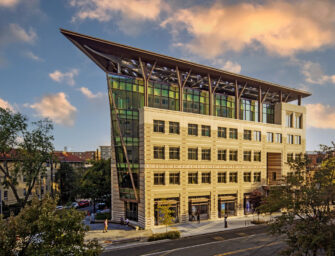#AGU20 week 1 numbers & wrap up
We can’t believe the first week of #AGU20 has concluded; time went by so quickly!
First: #AGU20 by the numbers. As of 4 PM ET Friday:
- Almost 24,000 attendees from 103 countries.
- 67% of these are from the U.S., 33% from outside the U.S.
- Top countries outside the U.S.: Canada, UK, China, Japan, Germany, India
- 1,100 undergraduate attendees and 170 high school and middle school students whose free registration is thanks to AGU members
- 900+ members and nonmembers from low and low-middle income countries whose free registration is thanks to AGU members
- 313 press registrants
- 60+ exhibiting organizations
- 1,800 sessions
- 94 town halls
- 1 climate rapper who will be live next week
- ca. 117,000 total video plays
- 3.36 TB of video data. For perspective, that’s about 65 times as much as Wikipedia.
- ca. 284,000 videos total (accounting for re-uploads, 10 versions of every video to accommodate browsers and bandwidth speeds).
- 48,911 visits to posters
- 4 minutes per visit per poster
- Browser use: 63% Chrome / 17% Safari / 14% Firefox
- 93% of visits are desktop, laptops or tablets; 6% on mobile phones
- 9 days to go …
The last day of the first week of #AGU20 featured a plenary talk from Dr. Freeman Hrabowski, president of UMBC. His talk, “At a Crossroads: Reimagining Science and Society,” highlighted his work advocating for inclusive excellence in STEM and provided many powerful and inspirational messages to our community regarding the imperative of expanding diversity in STEM. He specifically connected the need for diversity to develop and ensure trust in science and address global challenges, a theme carried forth in other plenaries this week
Several town halls and events further examined diversity, equity and inclusion in STEM, including a town hall on developing an institution-specific DEI action plan and an event on responding to everyday incidents of bias in STEM.
Interested in how better to prepare, preserve, and publish software, data and data sets? Editors for three journals that have a focus on scientific data discussed these issues in an engaging town hall. Further answers and help are available at the Data Help Desk next week.
The first week wrapped up with the first virtual membership meeting, where AGU’s President Robin Bell, President-elect Susan Lozier and CEO/Executive Director Randy W. Fiser highlighted AGU’s Strategic Plan. This plan carries forth many of the emerging themes from this meeting, around supporting diversity, expanding communication and engagement, and the growing rich connections among science, scientific discovery, society and societal challenges. During the town hall, participants were asked to share what headlines (in the media) that would indicate the strategic plan was a success in 10 years from now. Here are a few of those headlines:
- AGU awarded Nobel Prize for their role in raising school STEM scores 30% worldwide
- Earth and Space Scientists announce major achievement in solving the climate crisis at their hybrid virtual/in-person Fall Meeting
- AGU investing and supporting online tools to support scientific discovery for all
- Snarky headline: Nobel Committee realizes how foolish they’ve been for not having a Nobel Prize in Earth and Space Science all these years
- The Hottest Jobs in 2025: Geosciences
-
The AGU citizen science program has engaged more than 500 million people globally over the past year
- Infamous AGU Fall Meeting to be Held on Mars — Field Trips Still Available
Check out our wrap ups from Tuesday, Wednesday and Thursday, and don’t forget to keep visiting our exhibitors for virtual swag and great discussions!
Catch up on the news coming out of #AGU20:
- Geologists to Shed Light on the Mantle with 3D Model. Eos, 4 December. The model, which will incorporate 227 million surface wave measurements, could help with everything from earthquake characterization to neutrino geosciences.
- Collaborative Graduate Student Training in a Virtual World. Eos, 4 December. With higher education increasingly moving online, a 3-year-old interinstitutional graduate student training program offers a model for universities to pool resources and expand course offerings.
- ‘Giant volcano’ may be hidden beneath waters off Alaska’s southern coast, experts say, Miami Herald, 3 December. Researchers from various fields and organizations gathered evidence that suggests a cluster of volcanic islands in the chain actually might be “interconnected” parts of one massive volcano caldera.
Note: not all recordings of live sessions may be available at the time of this post, but they will be available in the coming days. Please check the online platform for updates.




There are no comments
Add yours